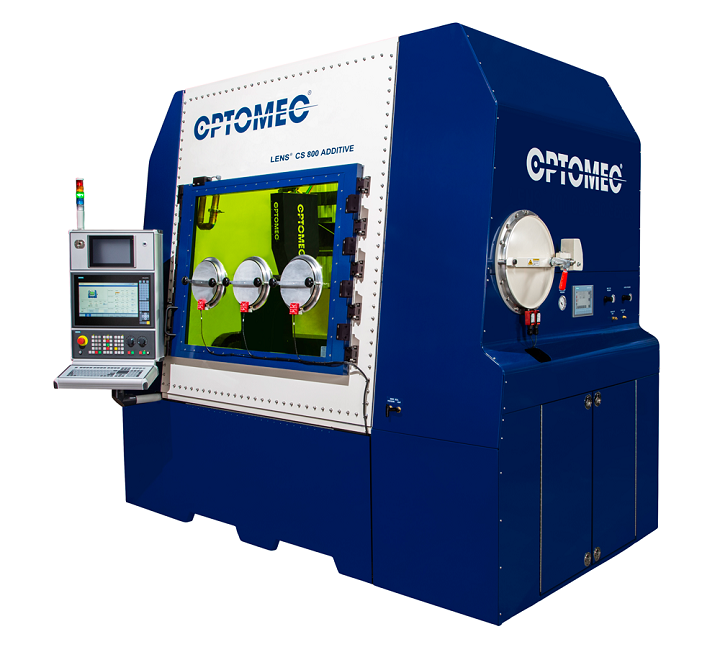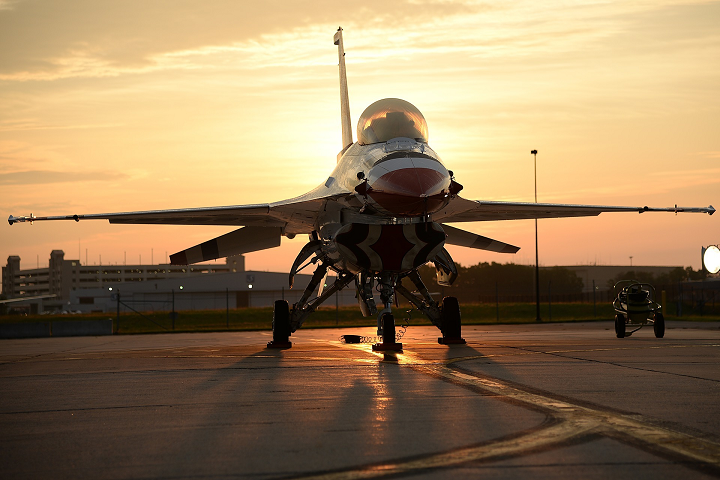Metal and electronics 3D printing solutions provider Optomec was awarded a $1 million contract from the US Air Force in late 2020 to create and install a high-volume additive repair platform for refurbishing turbine engine components at Tinker Air Force Base in Oklahoma City. It seems to be going well, as Optomec recently announced that it’s received a $500,000 process development contract from the Air Force Sustainment Center at Tinker AFB in order to extend these repair applications. With the contract, the company will be responsible for developing production recipes for the additive repair of flight-critical jet engine components, specifically for F-15 and F-16 fighter jets.
This program, with a projected ROI of 184% and a payback period of less than two years, could help the Air Force save millions of dollars. Militaries around the world are realizing that AM technologies can be very useful when it comes to the critical task of maintaining readiness, and as the USAF works to maintain a fleet of over 5,000 aircraft with an average age of 28 years, cost-effective solutions like 3D printing are necessary.
Optomec already offers many different turnkey process recipes for various common metal alloys and applications, which are used by its production customers to majorly decrease adoption time for adding additive technology to the shop floor. In this instance, the company’s metal LENS AM technology, which stands for laser engineered net shaping and is a version of powder-fed Directed Energy Deposition (DED) printing, will be used for additive repairs. This technology helps improve part performance and decrease product cost for industries, like aviation and defense, that are looking to complete sustainable repairs for extremely complex machinery.
According to the recent SmarTech Analysis “DED and Large-Format Additive Manufacturing Markets: 2021-2030” report, additive processes such as DED, WAAM, and large-format PBF are “rapid but rough cut and require significant post processing,” as the systems are almost more machine tools than 3D printers…good for heavy-duty applications, like jet engines. Optomec’s LENS systems, paired with Huffman’s laser cladding technologies, have been applied in the aviation and power generation sectors before, with many of the more than 200 machines the company has delivered so far used in high volume production of other turbine engine parts, and to repair more than 10 million components over the last two decades.
“The turbine industry has already widely adopted Optomec’s automated DED solution for high volume nickel alloy repair of aviation parts; meanwhile Optomec has worked out the process recipes for titanium repair. This solution essentially takes Optomec’s titanium repair process to high volume levels where it will have a major impact on lowering maintenance costs as engine OEMs use more and more titanium,” stated Jamie Hanson, Optomec’s VP of Business Development.
With this new USAF contract, Optomec’s LENS technology will be put to the test, along with some proprietary enabling machine capabilities such as batch automation using oxygen-free material handling, advanced vision and distortion compensation software, and Controlled Atmosphere processing. The focus will be on setting up optimized procedures and process parameters for additive repair of F-15 and F-16 turbine blades, made from nickel-based superalloys as well as titanium—the latter of which is being used more and more for aircraft engines in the commercial and military aviation markets. By working on this project, Optomec will gain even further experience in high-volume titanium repair that has to take place in oxygen-free environments for optimal mechanical performance and metallurgy.
The 3D printable libraries and recipes that Optomec will develop as part of this project will be added to the workflow at the same time as an advanced automated turbine blade repair machine.
Subscribe to Our Email Newsletter
Stay up-to-date on all the latest news from the 3D printing industry and receive information and offers from third party vendors.
You May Also Like
Gorilla Sports GE’s First 3D Printed Titanium Cast
How do you help a gorilla with a broken arm? Sounds like the start of a bad joke a zookeeper might tell, but it’s an actual dilemma recently faced by...
Nylon 3D Printed Parts Made More Functional with Coatings & Colors
Parts 3D printed from polyamide (PA, Nylon) 12 using powder bed fusion (PBF) are a mainstay in the additive manufacturing (AM) industry. While post-finishing processes have improved the porosity of...
$25M to Back Sintavia’s Largest Expansion of Metal 3D Printing Capacity Since 2019
Sintavia, the digital manufacturing company specializing in mission-critical parts for strategic sectors, announced a $25 million investment to increase its production capacity, the largest expansion to its operations since 2019....
Velo3D Initiates Public Offering in a Bid to Strengthen Financial Foundations and Drive Future Growth
Velo3D (NYSE: VLD) has been among a number of publicly traded 3D printing firms that have attempted to weather the current macroeconomic climate. After posting a challenging financial report for 2023,...

































